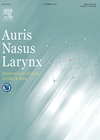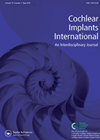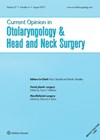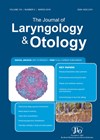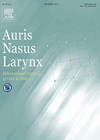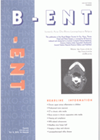
Journal Reviews
Treatment of incus lysis with hydroxyapatite bone cement
Middle ear implants provide a suitable alternative for some patients with a certain degree of sensorineural or mixed hearing loss, not wanting a hearing aid. Vibrant SounBridge® (VSB) middle ear implant (MEI), of Med-El®firm, is one such implant. In this...
Learning from reimplantation
The Irish implant centre in Dublin undertook a retrospective study of their reimplantation cases to look at what lessons could be learnt. Device failures fall into two classes: hard and soft failures. Hard failures are implant malfunction or altered performance....
Patient factors associated with spontaneous CSF leak
This article highlights the role of obesity, sleep apnoea and raised intracranial pressure as linked pathologies in the aetiology of the spontaneous cerebrospinal fluid (sCSF) leak. The authors link sCSF leak with obesity and comment on sCSF leak incidence increasing...
Diagnosing complications of acute mastoiditis in emergency situations
In many cases, acute mastoiditis is manageable with intravenous antibiotics and hospitalised care. However, the decision whether to intervene surgically remains crucial and reliance is based on radiological findings – CT scans for bony changes and MRI for possible intra-cerebral...
Does balloon tuboplasty work in the long term, and how can we measure outcomes?
There is much interest and debate at ENT conferences and within current literature about the role of balloon dilatation techniques for Eustachian tube dysfunction (ETD), a condition which we still only have limited understanding of, and which can be challenging...
How can we improve outcomes for patients with acute vestibular neuritis?
Vestibular neuritis is a common disorder that can leave up to 50% of patients with persistent vertigo symptoms for months to years following the acute insult. Often their first contact with ENT or balance specialists is many months after the...
Stapedotomy in osteogenesis imperfecta
Osteogenesis imperfecta (OI) is a rare connective tissue disease caused by a defect in collagen structure. Hearing loss is a characteristic feature of OI. It typically presents with conductive hearing loss initially, followed by a superimposed sensorineural component later in...
Acute ENT activity in a teaching hospital
This Belgian prospective audit attempted to provide justification for the provision of a 24-hour emergency service at a large 1038-bed teaching hospital (with 31 ENT consultants). The authors looked at a one-month period during which 190 patients were admitted. They...
ENT surgical training in Belgium
The authors aimed to identify strength and gaps in ENT training in Belgium through a national survey amongst ENT Belgian trainees. They attempted to contact 94 trainees, with a response rate of 59.5%. Of the respondents, 35.7% rated their level...
Double layer graft in endoscopic tympanoplasty
This Turkish retrospective study looked at the success rates following endoscopic tympanoplasty using the double layer graft technique. This involves using a tragal cartilage and perichondrium composite graft and a separate perichondrial graft for closure of the perforation. The crescent...
Genetic testing in congenital hearing loss
Advances in genetic testing over the last decade have reduced the cost and time such testing required and increased understanding of the genes involved in conditions like congenital hearing loss. This study from Atlanta looks at genetic testing from a...
Accuracy of CT scans for cholesteatoma and its complications
Chronic ear disease with cholesteatoma generally requires active surgical management and the requirement for this needs precise assessment. A retrospective study was conducted to evaluate the accuracy of CT scan findings in terms of predicting cholesteatoma and its associated complications...

